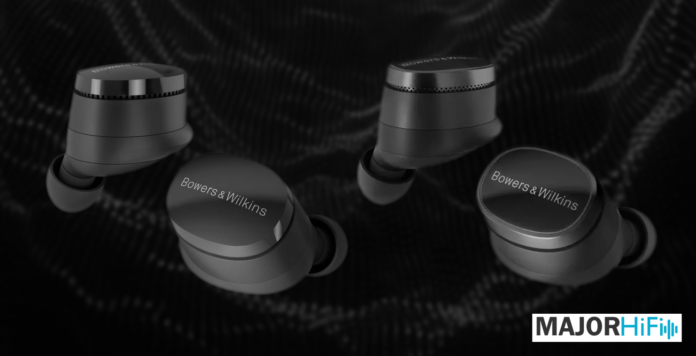Bowers & Wilkins has consistently delivered premium audio products, and their Pi series wireless earbuds are no exception. The Bowers & Wilkins Pi6 and Pi8 both bring exceptional sound quality and design, but key differences set them apart. In this guide, we’ll compare the Pi6 and Pi8 in terms of sound, features, comfort, battery life, and more to help you decide which model suits you best.
What You Get
| Pi6 | Pi8 |
|
|
Look & Feel
The Pi6 and Pi8 have B&W’s signature classy elegance in terms of their design. They both have a sleek aesthetic with plenty of stylish color variations. You can consider the Pi8 to have the more refined build, but placing the two earbuds right next to each other doesn’t bring out much of a difference between the two. The Pi8 might be a bit bulkier, but they still feel the same when placed in your ear.
Design & Functionality
Both the Pi6 and Pi8 have new 12mm drivers, but they use different materials. The Pi6 uses a Bio-cellulous unit, while the Pi8 uses a carbon cone. The Pi8n has a more significant output than the Pi6, but both leave you with an average amount of headroom. There’s ANC on both earbuds, but the Pi8 has the stronger effect. Although, the Pi6 still has effective isolation and environmental features for its price. You can download the B&W headphone companion app to access EQ, and customizable controls with both earbuds. I found the Pi8 to be a bit more responsive with its touch sensors, but both have playback control through its wear sensors, which play/pause audio when inserting/removing the earbuds.
Bluetooth
While the Pi8 has more advantages when used with Android devices though the use of aptX Lossless, I actually experienced more dropouts with it over the Pi6. They both had fast pairing though, and other might not have the same issues I did with the Pi8’s connectivity.
Battery Life
Neither the Pi6 or the Pi8 have a particularly great battery life. The Pi6’s 8 hours from one charge is respectable for the price, but the Pi8 being mostly the same for more money is disappointing.
Soundstage
When A/B testing the Pi6 and Pi8, it’s immediately clear which set of true wireless earbuds has the better soundstage. While the Pi6 has a suitable level of spatial accuracy for its price, it is easily outdone by the superior presentation of the Pi8. It cannot match its scope, or precision, as the Pi8 displays more defined layers and better separation than the Pi6. They can both be considered linear, but only the Pi8 is able to highlight space between instruments. The Pi6 isn’t congealed, but the soundstage and imaging appear more confused and organized than on the Pi8.
Low End
Both earbuds have a significant bass response, but with very different tonalities. You get a boomy timbre with the Pi6 that reminds me of Sony’s WF-1000XM5, but with more instrumental definition. The Pi8 is much more balanced, with smoother grooves and clarity. Details are easier to piece together, and the region feels more separated from the low-mids. There’s more realism to the Pi8’s bass, but it also doesn’t forget to bring a considerable impact.
Mids
The Pi6 shows some well-managed clarity for the price, but compared to the Pi8 it’s easy to see which one is superior. There’s a lot of recession with the Pi6, and because of the boosted low-mids the extra resonance can create some fog. With the Pi8, you get a much more transparent frequency spectrum, even with a similarly warm timbre. You can still hear some good vocals and acoustic instruments on the Pi6, but the Pi8 gives its sound more weight in the midrange, resulting in tracks that feel livelier.
Highs
You get a smoother response with both the Pi6 and Pi8, but they offer different levels of detail. With the Pi6, you get tiny slivers of high-end sparkle that gives off the smallest impression of crispness. The Pi8 has more of a brightness to it, but it’s controlled well. There’s a more pronounced tail to high-end artifacts, but both earbuds are surprisingly tight and even in their treble region.
Summary
If you’re looking for high-quality wireless earbuds with excellent sound and ANC but don’t want to break the bank, the Bowers & Wilkins Pi6 are a great choice. They offer a solid all-around performance and a lower price point, making them ideal for casual listeners. However, if you’re an audiophile or someone who values premium features like dual hybrid drivers, wireless charging, and top-tier ANC, the Bowers & Wilkins Pi8 are worth the extra investment. The Pi8 delivers a more refined and detailed sound experience, making them the better option for those who want the best audio quality Bowers & Wilkins has to offer.
The Bowers & Wilkins Pi6 and Pi8 are available at Audio46.
MAJORHIFI may receive commissions from retail offers.








